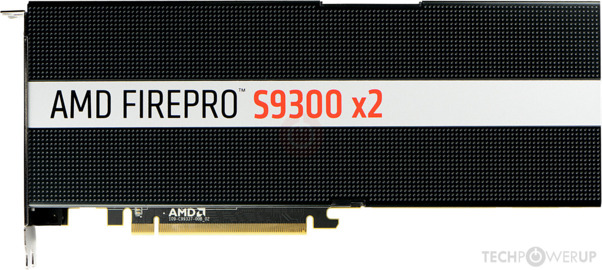Hello,
I'm new to the forum: hello to everyone.
As the title says, it looks like I've bricked a s9300x2: I'll try to provide enough details so you can help me.
I've bought a couple of s9300x2 and tried to flash a bios in them, after saving a copy of the original bios.
For those who don't know, the s9300x2 is basically two radeon r9 fury nano printed on the same pcb.
After doing some tests, I've decided to flash this bios, using amdvbflash on hiveos.
On the first gpu, everything went fine. On the second though...
This is how the working gpu(s) looks like:

Nice hashrate, nice power consumption, but that's a different story.
After trying to flash the same bios on the second gpu(s), that little bastard isn't recognized anymore by the system.
Or, better, is only recognized when plugged in the same system as the working s9300x2, BUT only if the bios flashed (on the working gpu) is the one I've linked above, and it shows something like this:
Radeon R9 Fury/Nano/X
Unknown Memory 15-15 · xxx-xxx-xxxx
The second gpu isn't recognized if I run
amdvbflash -i
It only says

Which is the working gpu(s).
Though it appears on hiveos and if I run
gpu-detect list
If i try to flash the original bios on the bricked gpu, it says "rom flashing OK", and if I open the menu, it says "flashing card 2" and "3", which are the bricked ones (picture for reference: I know it says "flashing card 0" and "1".
But the gpu actually flashed is the one who already works.

I've tried shorting pins 1-8 (like I did several times, always successfully) and 4-7 (like this thread), but the gpu still isn't recognized, doesn't matter if I put it alone on the system or with the working one (in this case, it appears but behaves just like i wrote above).
Maybe am I not actually shorting the bios?
This is the card and those are the chips i've tried to short


This is the back of the card, I've also tried to short the highlighted chip in the second pic.


Some other useful details: the bricked gpu(s) actually heats. So it's not completly dead, and the first gpu heats more than the second (as it is supposed to do).
Mobo is a gigabyte z170 hd3p.
I guess this is all. If something isn't clear enough, I'm sorry: english is my only my third language. Just let me know and I'll try to explain again.
Greetings
I'm new to the forum: hello to everyone.
As the title says, it looks like I've bricked a s9300x2: I'll try to provide enough details so you can help me.
I've bought a couple of s9300x2 and tried to flash a bios in them, after saving a copy of the original bios.
For those who don't know, the s9300x2 is basically two radeon r9 fury nano printed on the same pcb.
After doing some tests, I've decided to flash this bios, using amdvbflash on hiveos.
On the first gpu, everything went fine. On the second though...
This is how the working gpu(s) looks like:
Nice hashrate, nice power consumption, but that's a different story.
After trying to flash the same bios on the second gpu(s), that little bastard isn't recognized anymore by the system.
Or, better, is only recognized when plugged in the same system as the working s9300x2, BUT only if the bios flashed (on the working gpu) is the one I've linked above, and it shows something like this:
Radeon R9 Fury/Nano/X
Unknown Memory 15-15 · xxx-xxx-xxxx
The second gpu isn't recognized if I run
amdvbflash -i
It only says
Which is the working gpu(s).
Though it appears on hiveos and if I run
gpu-detect list
If i try to flash the original bios on the bricked gpu, it says "rom flashing OK", and if I open the menu, it says "flashing card 2" and "3", which are the bricked ones (picture for reference: I know it says "flashing card 0" and "1".
But the gpu actually flashed is the one who already works.
I've tried shorting pins 1-8 (like I did several times, always successfully) and 4-7 (like this thread), but the gpu still isn't recognized, doesn't matter if I put it alone on the system or with the working one (in this case, it appears but behaves just like i wrote above).
Maybe am I not actually shorting the bios?
This is the card and those are the chips i've tried to short
This is the back of the card, I've also tried to short the highlighted chip in the second pic.
Some other useful details: the bricked gpu(s) actually heats. So it's not completly dead, and the first gpu heats more than the second (as it is supposed to do).
Mobo is a gigabyte z170 hd3p.
I guess this is all. If something isn't clear enough, I'm sorry: english is my only my third language. Just let me know and I'll try to explain again.
Greetings
Last edited:





